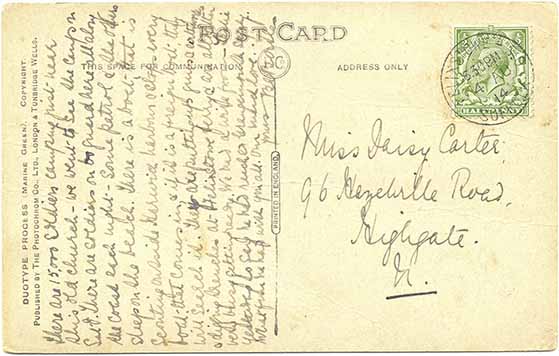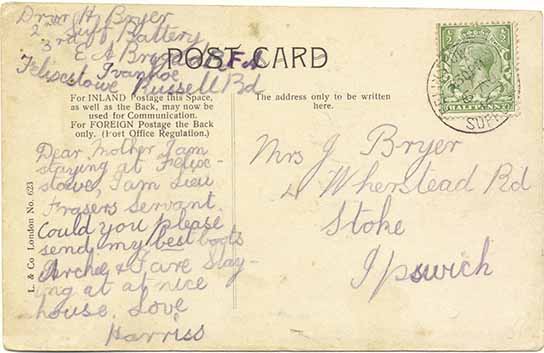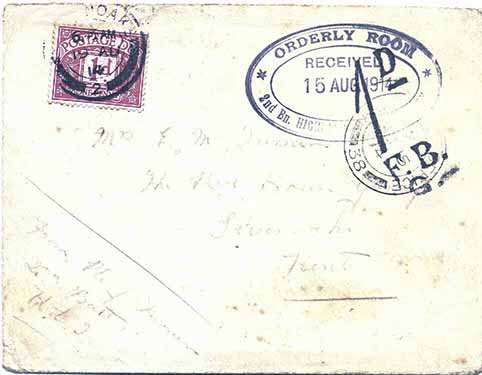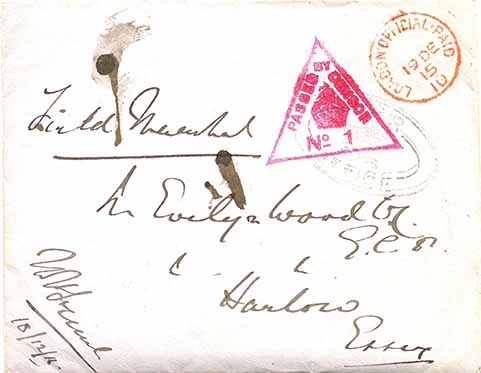

Postcard from a civilian, postmarked at Felixstowe 6.30 pm on 4th August 1914 - 4½ hours before Britain declared war on Germany, there having been no response to an ultimatum issued to Germany following invasion of neutral Belgium.
The writer describes much military activity in the Felixstowe area:
15,000 soldiers camping.
Soldiers on guard all along the coast each night.
A boat scouting outside Harwich harbour stops every boat that comes in, and if it is a foreign boat they will search it.
Putting up guns and earthworks and digging trenches.
Altogether very busy getting ready.
Postcard from one of the Suffolk Territoral soldiers, postmarked at Felixstowe 6.30 pm on 6th August 114.
From Driver H. Bryer, 2nd Suffolk Battery, 3rd East Anglian Brigade, Royal Field Artillery (Territorial Force).
2nd Suffolk (Howitzer) Battery was an Ipswich unit.
The writer says he is Lieut Fraser's Servant [Lieut D.C. Fraser].
From Driver H. Bryer, 2nd Suffolk Battery, 3rd East Anglian Brigade, Royal Field Artillery (Territorial Force).
2nd Suffolk (Howitzer) Battery was an Ipswich unit.
The writer says he is Lieut Fraser's Servant [Lieut D.C. Fraser].


The main body of the British Expeditionary Force crossed the Channel to France, thence into Belgium, between 12th and 17th August 1914, accompanied by Army Post Offices.
This cover from 2nd Bn Highland Light Infantry, in 5th Brigade, 2nd Division, bears the earliest recorded APO postmark on 15th August,
of Army Post Office 38 - at Boulogne. Postage was payable until
the end of August, but surcharges were at the single rate.
The Commander in Chief of the British Expeditionary Force was
Field Marshal Sir John French.
This cover from him was sent in December 1915, shortly before
his retirement. It was sent by bag to the War Office in London, where it was posted as official mail. Note the censor stamp
(third type) No. 1 used at GHQ at St Omer, France.
Field Marshal Sir John French.
This cover from him was sent in December 1915, shortly before
his retirement. It was sent by bag to the War Office in London, where it was posted as official mail. Note the censor stamp
(third type) No. 1 used at GHQ at St Omer, France.